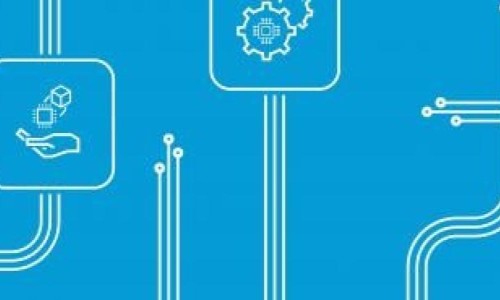Yielding Power to Youth: Making the leap into youth-led advocacy campaigns is a powerful way to walk the talk.

Yielding Power to Youth: Making the leap into youth-led advocacy campaigns is a powerful way to walk the talk.
- |
-
Jul 01, 2024
Youth-serving organizations almost always emphasize cultivating leadership skills, but how often are those youth empowered to be the architects of their own vision when putting those skills into practice? How often are youth set to work executing a vision that adults have already created, on their behalf?
There is a balance to be struck, of course; research consistently shows the effectiveness of centering participants in program design, and all of our work at She’s the First centers girls, in the sense that programs are developed by listening to, designing with, and implementing with the people for whom the programs are intended.
However, girl-led programming takes this a step beyond girl-centered programming: relinquishing actual leadership power and putting it in the hands of girls, allowing the work to be defined by and led by girls, not program staff.
It can, of course, be uncomfortable for staff to take a back seat and follow the vision of the youth they work with, providing mentorship and administrative support as needed. But as activism researcher Lyn Mikel Brown wrote in Powered by Girl: A Field Guide to Supporting Youth Activists this is exactly why should be doing it. Everyone loves to embrace “girl power,” only to recoil when girls push back against the status quo. This knee-jerk reaction can be a sign that well-meaning organizations are subconsciously treating the girls in their program as products or case studies, rather than whole, complicated people. And when girl activists are seen as a product in a program’s system, Brown found in her research, they “are lifted out of the relationships, support systems, and communities that enabled their remarkable work,” seen as exceptional, such that the advocacy programs built to support them lean towards self-improvement and less toward disrupting social systems. By contrast, intergenerational activist work with supports systems—“where girls have control over the way things go”—has proven the most effective means of resistance to structural and systemic oppressions.
Creating an environment for projects to be truly youth-led can be challenging—it requires commitment and flexibility from your entire team. But at She’s the First, we’ve already seen remarkable results as we’ve transitioned from girl-centered activism campaigns to girl-led campaigns. We’re seeing this kind of shift towards a girl-led advocacy approach in localized programs across the sector, in organizations like EMpower, CARE, and Save the Children. It demonstrates to youth—who highly value transparency and authenticity—that we mean it when we tell them they are capable of leading. This transition hasn’t been and won’t always be easy; there have been pitfalls, adaptations, and plenty of going back to the drawing board as we’ve learned and continued forward.
At She’s the First, we began to reflect in 2022 on how we could push our youth-led advocacy programs even further. We created the Girl Activist Fellowship, in which 30 girls from around the world would come together to plan, produce, and execute advocacy campaigns—and those projects became our organization’s advocacy causes for the year. The first cohort—all between 15 and 21 years old and from 15 countries—created campaigns bigger and bolder than we ever imagined. The girls decided on the issues they wanted to cover and the format of their campaigns (social media, a book, an in-person event, and a listening-and-learning discussion experience that could be replicated for girl groups around the world). They led the way on how those projects were executed, with the entire She’s the First staff taking their cues from the girls (For example, one team felt strongly that their event could not require ticketed admission, so our Development staff had to adjust their strategy for raising revenue to support costs.)
Here are the top five things we learned about confidently yielding decision-making power to youth:
1. Commit to Living in a Girl’s World
More than anything, girl-led work takes time! You should plan for a girl-led project to take about three times as long as you might estimate when working with professional colleagues. “Know that we are learning so much while we create,” as Allision Choong reflected (a She’s the First Girl Activist Fellowship Alumnus); “We are trying to understand what we're doing and also understand how what we're creating impacts others.” Progress on programs can be slow because they’re not just executing the tasks, they’re learning HOW at the same time. But isn’t learning exactly the point?
Be prepared to communicate expectations to colleagues, partners, and funders. You are a steward of your organization's needs and the vision of the girls who are leading it. And if you’re experiencing friction, don’t be afraid to be transparent with the girls about the tensions you’re balancing. A good way to think about it: You are a vendor that the girls have hired for their work. It’s okay to provide them with specific deadlines and expectations about what you need to meet their goals, but ultimately you work for them.
2. Be Prepared to Go Big
Never underestimate a girl: they will dream bigger and bolder than you might guess. Girls habitually overcommit and underestimate the amount of time it will take them to do something. This is normal for their developmental stage!
For example, Choong’s own working group initially envisioned hiring an illustrator or even seeking professional publication of the children’s book they wrote, knowing that their project needed to be completed within a few months. Another working group initially planned to select, notify, and book international travel for winners of an art contest within just a few weeks of the gallery opening. In each of these cases, the girls learned more from experiencing the frustrations and pitfalls of not right-sizing their plans than they would have by being shut down at first pass. Adolescents are still learning about cause and effect, consequences, and predictive thinking. Rather than admonish them for these very normal mistakes, plan from the beginning to work through these important life experiences and lessons with them. (Remember: multiply whatever your estimated timeline would have been by three.)
3. Embrace (and Trust) Big Feelings
Another thing that's developmentally normal for young people: a lot of big feelings.
They are doing something they’ve probably never done before, and that naturally heightens feelings of frustration, nervousness, and excitement. In the case of group efforts, not only are they learning new skills and developing a deeper understanding of their passions, they’re also dealing with all of the pros and cons that come with teamwork. But while you should be prepared for a little bit of drama, don’t underestimate their ability to handle it! This, too, is part of the learning curve. You don’t need to step in for every problem. Instead, try talking one-on-one with girls to coach them through navigating interpersonal relationships.
“Give girls the space to feel what they need to feel and help them understand that they are girls themselves,” as Girl Activist Fellowship Alumna Sania Hammad puts it. “They are going to change the world, but you need to give them the space to understand how to do that.”
4. Work to Translate
Girls likely won’t know all your technical expertise and jargon. Why should they? More than that: it’s all too easy for adult professionals to minimize girls’ ideas because they are not presented in a professional way. This can mean that when a girl says “the vibes are off” (instead of “this isn’t the atmosphere I wanted to create for this event)” or “we want this to be something that can go on forever” (instead of “we want to create longevity for this campaign”) their voices aren’t actually heard. But how different is the underlying insight?
Your job, as their mentor, is to listen with an open mind to what they’re really saying. Then, translate their thoughts for your colleagues and partners in a way that both honors the girls’ intent and intelligence AND makes their message clear to others.
5. Give Permission to Fail
If it’s impossible for you to lose a game because you know the coach will always step in and save the ball, would it feel like a game? Being allowed to fail is a keystone of having true ownership over your work, and this is no different for youth.
Unless something will put the girls, their community, or your organization in true harm, it’s okay for not everything to go perfectly. As a professional, you should have a very clear idea of what is and isn’t critical at the end of the day, particularly to ensure there is enough time (Remember, three times!) for failures and adjustments within the process. Communicate early and often with other stakeholders. And if you feel that it would be a major detriment or harm for a project to not go as planned, consider whether this is really something that should be girl-led or if it would be better to be girl-centered. We want to empower girls to lead, but we also don’t want to put unfair or inappropriate weight on their shoulders. They’ve got enough of that to deal with already.
The Process Is the Key
Don’t forget to give patience and kindness to yourself and your team, too! This kind of transition is not easy, and no one will ever execute it perfectly. One major mental shift that helped our team was to remember that in girl-led work, your outcomes will not just be the impact of the campaign itself, but also the impact that doing that work had on the girls leading it.
At its core, girl-led work is more about the experience of the girls leading than it is about the results of the campaign. Our goal is to let girls lead, not to adultify them. Girls should not need to act like adults to have our respect. Rather than expecting girls to erase their girlhood in order to lead, we can create an environment where girls can thrive as themselves.
In the process, we might just end up reconnecting with a younger version of ourselves who believed anything was possible.
AUTHORS
Kate Lord is director of advocacy & communications at She’s the First (@shesthefirst) and an accomplished photojournalist.
Janae Phillips is the advocacy manager and an experienced designer. She’s the First is a global organization that teams up with grassroots leaders to make sure girls are educated, respected, and heard.
Add a Comment
Related Resources
Get New Jobs Notification!
Sign up with your email address to receive news and updates. Subscribe to get our latest content by email. We respect your privacy, Unsubscribe at any time.

























Comments